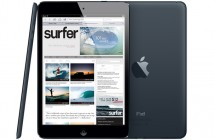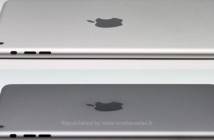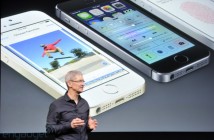 While it remains to be seen if Apple’s iBooks app and the iBookstore will be able to transform the print industry, they both have ignited a spark that makes reading more fun. The idea of reading on mobile devices is not new. Devices like the Amazon Kindle and the Sony eReader have been around for a while, but with the buzz surrounding iBooks sparking more interest, are digital books worth it?
While it remains to be seen if Apple’s iBooks app and the iBookstore will be able to transform the print industry, they both have ignited a spark that makes reading more fun. The idea of reading on mobile devices is not new. Devices like the Amazon Kindle and the Sony eReader have been around for a while, but with the buzz surrounding iBooks sparking more interest, are digital books worth it?
The Beginning of the Digital Revolution
When Apple launched the iTunes Store in 2003, Steve Jobs made the case for why digital downloads would be the future. At the time, it was fairly easy to illegally download music through services like Napster or Kazaa. However, Jobs felt that people would pay a price, very reasonably set at 99 cents, to download music that was great quality and featured intact metadata and gorgeous album artwork. But does the same argument extend to digital books? The current offerings on the iBookstore seem to disagree.
Limitations of the ePub Format
There’s a few considerations to keep in mind, such as selection and format. When the iTunes Store first launched, its catalog only contained 200,000 titles. Seven years later, the catalog features over 11 million titles. While Apple hasn’t released a specific number, its website says the iBookstore features tens of thousands of titles with more arriving daily. Still for most, the selection feels a bit limited. It’s unlikely you’ll be able to replace your entire library with e-books soon.
Another consideration is formatting. A lot of digital content like books and documents are in PDF format. This is great as this format can maintain the exact structure, graphics, typeface and colors from the original source material. However, there are some trade offs. For example, zooming on a PDF document, especially on an iPad, will require you to scroll up and down, or even worse left and right, just to view everything on one page. This doesn’t make for a natural reading experience.
Content on the iBookstore is delivered in ePub format, which is essentially an XML-based web page. By using a standards-compliant format (and we all know how Apple loves open standards), the ePub format supports benefits like being able to resize text or switch typefaces. This works because the iBooks app can simply modify the stylesheet applied to the document. When you make these changes, it’s easy for the iPad to reflow the content onto additional pages if needed. But sometimes this can get a bit wonky (yes, that’s a technical term).
First, custom typefaces are not supported in iBooks. While Safari on the iPad itself will support font embedding, iBooks misses out on this feature.
Another issue is images which are displayed in-line with the text content. What this means is in an original book, you might have a few photos out to the side of a paragraph but on the iPad, they’ll just be displayed one right after the other, mixed in with the narrative. For some types of content, this may be a non-issue, but for others where the page structure is essential to the reading experience, this can be problematic.
Both of these are the top reasons why you don’t see periodicals available through the iBookstore. Imagine the implications this causes for technical books or textbooks. Isn’t the education market supposed to be a big market for this device?
Some Potential Solutions
There are some potential solutions to this. Publishers could simply display some pages as single images, as this would maintain formatting, but accessibility features and the ability to bookmark and change text sizes would be lost.
Another solution would be that authors could release specific apps for these titles. Some have followed this route, but managing more than a handful of these apps really begins to clutter up the device and suddenly, the simplicity of the iBooks app for managing your content is gone.
Since ePub is an open e-book standard, there is hope that future versions will be able to address these issues. Likewise, the iBooks app itself can also be updated to add additional functionality, however, once you’ve bought a book, you own it. Unlike how Apple offered users to upgrade to iTunes Plus to get higher bit-rate versions of their songs, its unlikely that Apple will go back and update older titles or offer “plus” versions of some of these books.
Instead, Apple is being more selective about which titles are showing up on the iBookstore. Obviously, there are no periodicals. You could argue that the iBookstore is intended for books only, but I really think that’s just the beginning, similar to how the iTunes Store began with music videos before adding TV shows and then movies. But could Apple release a different app to manage periodicals and newspapers? Perhaps and so there is yet another solution.
Regardless, the feasibility of converting your entire book collection to e-books is unlikely in the short-term, either because of a lack of content or simply because e-books are not worthy replacements of the books on your shelves. The ePub format itself still has a number of issues to address before printed books become a proverbial page from the past.
Have you used the iBooks app or the iBookstore? What are your thoughts on the ePub format? Is it sufficient enough to replace your library? Share your thoughts in the comments and tell us what you think.

Continue to read on TheAppleBlog



